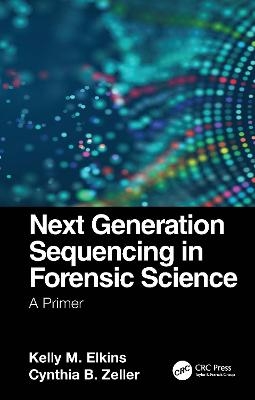
Next Generation Sequencing in Forensic Science
CRC Press (Verlag)
978-0-367-47893-3 (ISBN)
- Lieferbar (Termin unbekannt)
- Versandkostenfrei
- Auch auf Rechnung
- Artikel merken
Next Generation Sequencing in Forensic Science: A Primer addresses next generation sequencing (NGS) specific to its application to forensic science. The first part of the book offers a history of human identity approaches, including VNTR, RFLP, STR, and SNP DNA typing. It discusses the history of sequencing for human DNA typing, including Sanger sequencing, SNaPshot, pyrosequencing, and principles of next generation sequencing. The chapters present an overview of the forensically focused AmpliSeq, ForenSeq, Precision ID, PowerSeq, and QIAseq panels for human DNA typing using autosomal, Y and X chromosome STRs and SNPs using the MiSeq FGx and Ion Torrent System. The authors outline the steps included in DNA extraction and DNA quantitation that are performed prior to preparing libraries with the NGS kits.
The second half of the book details the implementation of ForenSeq and Precision ID to amplify and tag targets to create the library, enrich targets to attach indexes and adaptors, perform library purification and normalization, pool the libraries, and load samples to the cartridge to perform the sequencing on the instrument. Coverage addresses the operation of the MiSeq FGx and Ion Chef, including creating a sample list, executing wash steps, performing NGS, understanding the run feedback files from the instrument, and troubleshooting. ForenSeq and Precision ID panel data analysis are explained, including how to analyze and interpret NGS data and output graphs and charts. The book concludes with mitochondrial DNA (mtDNA) sequencing and SNPs analysis, including the issue of heteroplasmy. The final chapters review forensic applications of microbial DNA, NGS in body fluid analysis, and challenges and considerations for future applications.
FEATURES
Focuses on human identification using traditional and NGS DNA typing methods targeting short tandem repeats (STRs)
Applies the technology and its application to law enforcement investigations and identity and ancestry single nucleotide polymorphisms (SNPs) for investigational leads, mass disaster, and ancestry cases
Presents the underlying principles of NGS in a clear, easy-to-understand format for practitioners and students studying DNA in forensic programs
This is the first book to prepare practitioners to utilize and implement this new technology in their lab for casework, highlighting early applications of how NGS results have been used in court. The book can be utilized for upper-level undergraduate and graduate students taking courses focused on NGS concepts. Readers are expected to have a basic understanding of molecular and cellular biology and DNA typing.
Dr. Kelly Elkins is an Associate Professor of Chemistry at Towson University and a founding editor-in-chief of the Journal of Forensic Science Education. Dr. Cynthia Zeller is an Associate Professor of Chemistry at Towson University.
1. History of DNA-Based Human Identification in Forensic Science 2. History of Sequencing for Human DNA Typing 3. Sample Preparation, Standards, and Library Preparation for Next Generation Sequencing 4. Performing Next Generation Sequencing 5. Next Generation Sequencing Data Analysis and Interpretation 6. Next Generation Sequencing Troubleshooting 7. Mitochondrial DNA Typing Using Next Generation Sequencing 8. Microbial Applications of Next Generation Sequencing for Forensic Investigations 9. Body Fluid Analysis Using Next Generation Sequencing 10. Conclusions and Future Outlook of Next Generation Sequencing in Forensic Science
| Erscheinungsdatum | 17.09.2021 |
|---|---|
| Zusatzinfo | 6 Tables, color; 10 Line drawings, black and white; 43 Halftones, black and white; 53 Illustrations, black and white |
| Verlagsort | London |
| Sprache | englisch |
| Maße | 156 x 234 mm |
| Gewicht | 520 g |
| Themenwelt | Naturwissenschaften ► Biologie ► Biochemie |
| Naturwissenschaften ► Biologie ► Genetik / Molekularbiologie | |
| Recht / Steuern ► Strafrecht ► Kriminologie | |
| ISBN-10 | 0-367-47893-5 / 0367478935 |
| ISBN-13 | 978-0-367-47893-3 / 9780367478933 |
| Zustand | Neuware |
| Haben Sie eine Frage zum Produkt? |
aus dem Bereich


